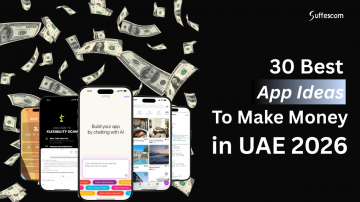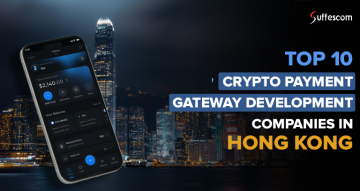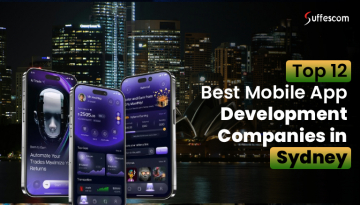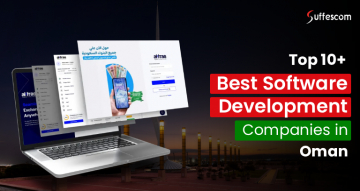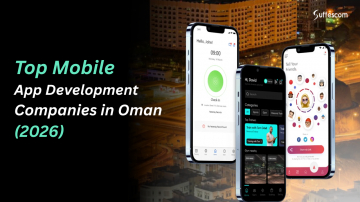Build a Fitness App like MyfitnessPal: A Complete Guide

With the growing speed of fitness and health consciousness in people today, building a fitness app is a great concept. According to the market study, MyFitnessPal generates around 12 million US dollars in revenue today. Fitness apps have become the limelight for millions on their quest for well-being in a society where wellness and health are the top priorities when making life decisions. One of the most well-known success stories from this digital fitness revolution is MyFitnessPal. Over the years, MyFitnessPal has transformed from just an idea to a brand today in the health tech industry.
In this blog, we will learn how to create apps similar to MyFitnessPal. The process steps start from idea to development and launch and maintenance. You can partner with an on-demand application development company to understand the stages and process of building an apps like MyFitnessPal.

Types of Best Fitness Plan App Like MyFitnessPal
Apps for Tracking Physical Activity
The app monitors all physical activities performed by users from morning until night. The tracking functionality of these apps monitors everything from sleep hours to climb count and speed statistics while tracking user-caloric expenditure.
Users can find their data visualization on the app screen, showcasing visualisation abilities that map route storage functions and display user accomplishments.
Apps for Diet And Nutrition
Through AI nutritionist app development, diet and nutrition applications enable users to track food intake and calorie consumption, balance fluids, and monitor body mass and weight measurements. Different diet apps allow users to establish personal goals, develop shopping lists, and retrieve recipe options.
Such apps include interactive gameplay features involving competition tracking systems and slimming contests. Nutrition and diet applications qualify as activity trackers because they monitor user nutritional behaviors. Platform functionality differs because it features advanced capabilities for users.
Apps for Personal Training
The technology behind Fitbod generates an artificial experience similar to training in fitness centers. Each application designates a personal trainer to help users. The program assigns support to its users from either human trainers or artificial intelligence programs, which guide users from start to finish on their fitness journey.
Users receive their daily workout schedules, dietary advice, and non-food-related lifestyle recommendations from this instructor through the Fitness tracking application.
The evaluation establishes a foundation for recommending food exposure and physical activity suggestions. The procedure occurs after users provide the required data to the system.
Workout Apps
These free workout apps mainly share information and training sessions for workouts with their users. To develop such a fitness app, you must optimize the exercises for various body parts or the fitness instructor.
Moreover, some of the latest advanced training apps can also specify the time frame for the exercises. A professional fitness app development company can quickly help you create workout applications that can help your mass users in many ways.
Hybrid Applications
The application unifies all components mentioned earlier in its framework. These applications assign a personal trainer who develops specified food choices and workout programs for achieving your health goal.
The apps facilitate self-monitoring by calculating calories from your food intake and exercise used to burn calories. The development of fitness applications includes features from every other software in the entire suite.
What Features Make a Fitness Plan App Like MyFitnessPal the Best?
A fitness plan apps like MyFitnessPal stands out due to its combination of user-friendly layout, advanced features, and data-driven insights. Here are the key features that contribute to its success:
Here, you can find fitness app development features in detail:
Comprehensive Food Database
A vast food database with nutritional details makes logging meals effortless. Users can search for foods or scan barcodes for automatic input, ensuring accurate calorie and macro tracking.
Calorie and Nutrient Tracking
The app allows users to set personalized calorie goals and track their nutrient intake, helping them achieve weight loss, gain, or maintenance goals. Real-time updates ensure users stay on track.
Exercise and Activity Tracking
Integration with fitness trackers and wearables enables users to monitor their workouts and daily activity levels. This feature ensures a holistic approach to health by balancing calorie intake and output.
Customizable Meal Plans and Recipes
MyFitnessPal offers tailored meal plans and key to a library of healthy recipes. Users can change plans based on dietary choices, allergies, or fitness goals.
Progress Monitoring
Visual tools like graphs and charts allow users to track their weight, measurements, and fitness progress over time. This motivates users to stay consistent with their goals.
Community Support and Challenges
The app fosters a sense of community by connecting users with others on similar fitness journeys. Challenges and forums encourage engagement and accountability.
AI-Powered Insights and Recommendations
By analyzing user data, the app provides actionable insights and recommendations. For example, it might suggest foods to meet a protein goal or workouts to burn additional calories.
Multi-Device Syncing
Seamless syncing across devices ensures users can log data and access their plans anywhere, whether on a smartphone, tablet, or desktop.
Custom Reminders and Notifications
Users can set reminders to log meals, drink water, or exercise, ensuring consistency in maintaining their fitness routines.
Premium Features
Advanced features, such as macronutrient goals, ad-free experiences, and deeper analytics, are available through a subscription model, enhancing the user experience for committed users.

Technical Steps for Creating an App Like MyFitnessPal
1. Conduct Market and Competitor Research
The first step entails studying market developments and reading competitions like MyFitnessPal, Fitbit, and Lose It! Understand consumer preferences, key functions, and gaps in present apps. Identify your target market and focus on what sets your app apart, such as unique integrations or areas of interest in health plans.
2. Think About Basic Fitness App Features
Define your app's core features, including calorie monitoring, food databases, workout plans, progress tracking, and integration with wearables. Prioritize consumer-centric design and simplicity of navigation. Advanced functions like AI suggestions, gamification, and social connectivity can also be considered for destiny scalability.
3. Choose the Ideal Health and Fitness App Development Team
Assemble a professional team of builders, UI/UX designers, and QA testers who enjoy health app development. Ensure they're gifted within the required technology stack, such as React Native, Flutter, Python, or Node.Js, and recognize APIs for wearable tool integration and nutrient data.
4. Select a Monetization Model
Choose a monetization strategy that aligns with your business goals. Common models include:
- Freemium: Basic features are complimentary, with advanced features behind a paywall.
- Subscriptions: Monthly or yearly plans for superior content.
- Advertisements: Non-invasive ads within the app.
- In-App Purchases: Additional fitness programs, recipes, or customization opportunities.
5. Phase of Inception
Begin with wireframing and prototyping to establish the app's layout and functionality. Use tools like Figma or Adobe XD to create a user-friendly interface. Simultaneously, outline the backend structure for data storage, user administration, and integration with external services.
6. Technical Documentation
Create detailed technical documentation to guide the development process. This includes architecture design, API specifications, and data flow diagrams. Define the tech stack, such as:
- Frontend: React Native or Flutter
- Backend: Node.js, Python, or Ruby on Rails
- Database: PostgreSQL, MongoDB, or Firebase
- APIs: Nutritional APIs, wearable integration APIs (Fitbit, Apple Health)
7. Workout App Development
Start with backend development to build a robust, scalable infrastructure. Implement features like user authentication, data synchronization, and API integrations. Concurrently, the front end will be developed with responsive design and seamless navigation. Integrate real-time tracking, notifications, and secure payment gateways for subscriptions or purchases.
8. Quality Control
Perform rigorous testing to ensure the app is bug-free and delivers a smooth user experience. Conduct functional, performance, and security testing to validate features like calorie tracking and data encryption. Automated testing tools like Appium or Selenium can be used to speed up the process. Collect feedback from beta testing to refine the app further.
Turn Your App Idea Into Reality—Get a Customized Development Plan Now!
Bring your vision to life with a trusted fitness app development company. Whether apps similar to MyFitnessPal inspires you, we provide tailored strategies to create feature-rich and user-centric solutions for your fitness mobile app development needs.
Factors Affecting The Cost of Developing App Like MyFitnessPal
Creating an apps like MyFitnessPal involves factors affecting the overall development cost. Here's a breakdown of the key elements:
1. App Features and Functionality
The complexity of features directly impacts the cost. Basic features like calorie tracking and exercise logging are more affordable, while advanced functionalities like AI-driven recommendations, integration with wearables, and multi-language support require additional development time and resources.
2. Platform Selection (iOS, Android, or Both)
Create an app like MyFitnesspal for a single platform is less costly than creating a cross-platform or native app for both iOS and Android. Yet, choosing frameworks like Flutter or React Native can lower the costs for cross-platform development.
3. UI/UX Design
The quality of the user interface and experience can affect the cost. A simple design will cost less, while a highly interactive, visually appealing design with animations and transitions will increase expenses.
4. Development Team Size and Expertise
The expenses fluctuate according to the number of personnel in the development team and their combined expertise. Hiring a team within the company costs more than partnering with a development agency or hiring freelancers. A standard development group contains project managers alongside developers, designers, and testers for quality assurance.
5. Integration with Third-Party APIs
Users of MyFitnessPal need to integrate their applications with food databases through APIs, wearable devices such as Fitbit and Apple Health, and payment gateway applications. When more integration points are necessary, the overall cost becomes higher.
6. Backend Development and Database Management
Backing up data storage systems and managing users in a scalable manner raises overall development expenses. Product development costs rise or fall based on combining the chosen database system and backend platform selection.
7. App Security and Compliance
Developing the best fitness plan app to fulfill data security standards such as HIPAA for healthcare or GDPR for European users entails extended development time, which raises total costs. Security depends heavily on features that include data encryption, secure authentication functions, and privacy settings.
8. Testing and Quality Assurance
The expense of developing a seamless app experience comes from complete testing that validates functionality alongside performance tests and security checks. Testing implementation with automated tools requires additional fees, increasing the overall cost.
9. Maintenance and Updates
Proper planning is needed to consider the long-term cost of maintaining apps with their updates and new feature additions. Routine platform compatibility tests must remain a priority for each update cycle.
10. Geographic Location of the Development Team
The location of the development team significantly affects the cost. For example, developers in North America or Europe typically charge higher rates compared to those in Asia or Eastern Europe.
11. Marketing and Launch Costs
Promoting and launching the app on app stores contributes to the overall expense. Costs include app store fees, advertising campaigns, and promotional activities.
Estimated Cost Range
- Basic App: $5000 - $10000
- Mid-Level App with Advanced Features: $10000 - $15000
- High-End App with Custom Features and AI Integration: $25000+
Considering these factors, you can better plan your budget and prioritize features to create an app like MyFitnessPal, or Strava, in a cost-effective and feature-rich way.
Also Read: Cost to Build Fitness App Like Strava
Empower Wellness—Partner With Us to Build a Game-Changing Fitness App.
Collaborate with a leading fitness app development company to create an innovative app like MyFitnessPal. Leverage our fitness mobile app development expertise to deliver personalized, scalable, and engaging health tech solutions for your audience.
Final Note
Building an app like MyFitnessPal requires meticulous planning, progressive ideas, and a sturdy development approach. You can create a profitable health app by understanding the market wants, figuring out key features, and carefully considering elements like technology stack, team expertise, and budget. While the initial cost and effort may seem high, the possibility for long-term growth and sales in the booming health industry makes it a profitable investment. Cooperating with an expert fitness app development company and focusing on a user-centric layout can ensure your app stands out and grows in the competitive fitness and health marketplace.
FAQs
1. How much does developing a fitness app like MyFitnessPal cost?
The fitness app development cost varies depending on the complexity of features, the platform (iOS, Android, or both), and the development team's location. A professional fitness app development company charges the basic app costs around $5000 - $10,000, while an advanced app with AI features and integrations can exceed $25000.
2. How long does it take to build a fitness app?
The timeline relies upon the app's complexity and scope. On average, a vital app may take 3-6 months, while a superior app with custom capabilities and integrations may take nine-twelve months or longer.
3. What features are essential for a fitness app?
Core features include calorie tracking, exercise plans, progress tracking, user profiles, wearable device integration, and notifications. Advanced features like AI-pushed pointers, gamification, and community support can improve user engagement.
4. How can a fitness app generate revenue?
Fitness apps can monetize through freemium models (basic features are free, top-rated features are paid), subscriptions, in-app purchases (custom plans, recipes, etc.), and commercials. Choosing the right model depends on your audience and app goals.

